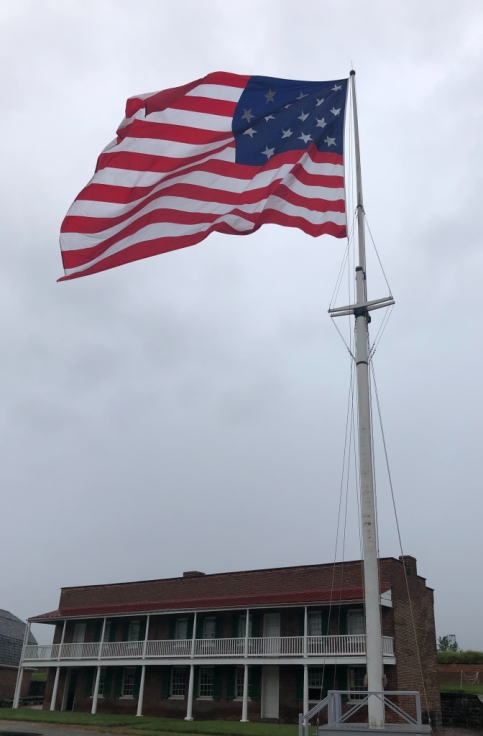
Sitting right on Baltimore’s inner harbor near an industrial area on the edge of downtown is Fort McHenry, the birthplace of the “The Star-Spangled Banner”. It was during the War of 1812 that a young lawyer named Francis Scott Key penned the now famous words. He had been aboard a US truce ship on the river while witnessing the battle between the Americans defending Baltimore at Fort McHenry and the British navy. The British had sailed up the Chesapeake Bay after burning Washington and filled the river with its ships aiming to capture Baltimore. After the battle in September of 1814, Key was inspired to write the poem when he saw that the garrison flag “yet waved” by the dawn’s early light over Fort McHenry. The poem was set to an adapted tune of an 18th Century European song called “To Anacreon in Heaven”, and in 1931 “The Star-Spangled Banner” was officially adopted as the National Anthem of the United States. Did you know that the original title of Key’s poem was “The Defense of Fort McHenry”?

Fort McHenry was built between 1798 and 1803 and is named for James McHenry who hailed from Baltimore and was George Washington’s Secretary of War. During the Civil War, the fort was used to hold prisoners of war, but it was primarily used as a prison for pro-succession Maryland residents. During World War I, the grounds around Fort McHenry were home to 100 buildings composing a 3,000 bed hospital. Called General Hospital 2, which was one of the largest in the US at the time, it was used to treat wounded from the battlefields of France. Fort McHenry is the only national park site that has been designated as a shrine.






We’re going to call this trip done, but in closing the post we want to leave you with a couple of cool shots at Oriole Park at Camden Yards. This is where the Baltimore Orioles baseball team plays, and the stadium is next to M&T Bank Stadium where the Baltimore Ravens football team plays. Both fields are in downtown Baltimore.


Thanks so much for stopping by! Until the next time…
Travel safe, travel smart, and we will see you down the road.
Mike and Kellye

As always, we strive to be as accurate with our information as possible. If we made a mistake, it was unintentional. (Hey, we’re only human!) We aren’t paid for our recommendations, and we only recommend our own tried and true vendors and venues. Our suggestions are for places that we’ve heard good things about but haven’t visited personally, and our opinions are our own.
©2021

